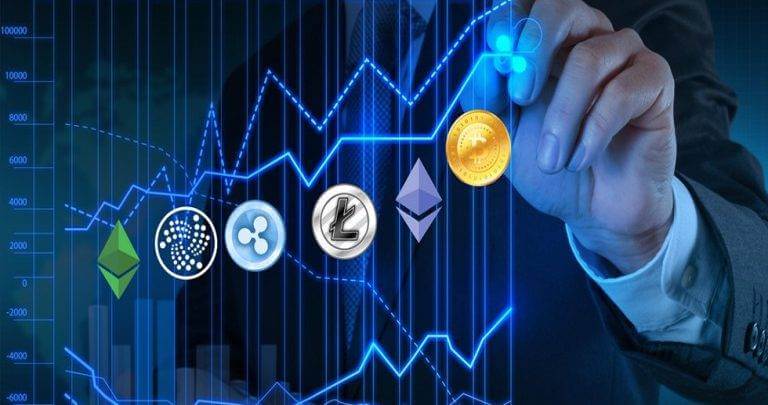Although cryptocurrencies are always evolving, some general observations can be made.
The costs of crypto transaction fees will differ greatly depending on the type of virtual currency. For example, Bitcoin will have much higher fees because of its popularity compared with other alternative cryptocurrencies including Ethereum, Litecoin, and Ripple (XRP). Let’s consider how you can save on cryptocurrency transaction fees in 2024. If you would like to know the current USDT price take a look here.
 Popular Cryptocurrencies and Their Transaction Fees
Popular Cryptocurrencies and Their Transaction Fees
Ethereum (ETH): Ethereum fees are known as gas fees, which are units of computational effort required to process transactions and smart contracts. These fees can fluctuate based on the complexity of the transaction and how congested the network is. Different types of Ethereum fees can be calculated depending on the niche. Ethereum transactions in different niches are becoming increasingly popular, with ETH and TRON being responsible for 88% of all crypto transaction fees.
Litecoin (LTC): These transaction fees are much lower than popular coins, like Bitcoin. These fees are based on the size of the transaction in kilobytes (KB).
Bitcoin (BTC): These transaction fees are higher than most and vary depending on the network demand and are measured in satoshis per byte (sat/byte).
Factors Influencing Cryptocurrency Transaction Fees
Transaction fees vary widely from one coin to the next and are determined based on a number of different factors. There are both internal and external factors that can determine digital coin transfer fees:
- Network Congestion: When there are more transactions than should be awaiting approval, it can congest the network. Transaction fees can increase while users wait as they compete to process their transactions.
- Block Size: For some cryptocurrencies, the block size is limited. This means that for digital currencies like Bitcoin, there is a maximum number of transactions that can be included in each block.
- Transaction Size: The size of the data transaction that occupies that blockchain also affects the fee. This means that the bigger the transaction fee, the more the process will cost.
- Fee Market Dynamics: The market is influenced by the demand and supply dynamics. This means that users who want their transactions to be processed quicker will pay higher fees than those who wait a little longer at a lower cost.
These are the different cryptocurrency fee structures, which can vary depending on the currency. Below are the common fee structures. Transaction fees are charges placed on validating and processing transactions on the blockchain network. These fees have several purposes, including maintaining the network’s efficiency and security and incentivizing validators and miners to include transactions in blocks.
- Dynamic Fee: There are cryptocurrencies that use a dynamic fee structure that can be adjusted based on the network conditions.
- Fixed Fee: Some cryptocurrencies will have a fixed fee on all transactions, meaning they are charged the same fee price, no matter their priority or size.
- Fee Market Auction: Some fees are determined through an auction-like mechanism where users bid on the price they are willing to pay, and the highest bid is then prioritized.
- Percentage-based fees: Some cryptocurrencies charge transaction fees based on a percentage of the transaction amount. Decentralized finance (DeFi) uses this fee structure as part of their smart contract platforms and applications.
How To Minimize Cryptocurrency Transaction Fees
Here are some strategies that you can consider when wanting to minimize cryptocurrency transaction fees.
- Choose the right cryptocurrency: Depending on the cryptocurrency, there are varying fee structures, and some cryptocurrencies, such as Bitcoin, have higher transaction fees because of network congestion.
- Optimize transaction timing: To minimize costs involved with transaction fees, it is better to wait until off-peak hours to reduce fees by doing your transactions when the network is less congested.
- Use a fee estimation tool: A fee estimation tool can help you determine how much your transaction fees will cost. Most cryptocurrency wallets provide this tool.
- Choose the right fee level: Users can select the fee level for their transactions within their cryptocurrency wallets. This means they can choose a lower fee level, meaning their transactions have a slower confirmation time. You can adjust your fee level according to the urgency of the transaction.
- Utilize layer 2 solutions: These solutions offer transactions off-chain and can reduce fees significantly. It can also speed up transaction speeds.
- Consolidate transactions: Consolidating transactions can help if you usually make smaller transactions. You can reduce the fees paid on processes by reducing the amount of transactions you do.
- Stay informed about fee dynamics: Staying updated about the necessary information is important. This involves changes in fee structures, potential solutions that can help reduce fees, and network upgrades.
How To Maximise Savings With Cryptocurrency Transactions
- Choose the right exchange: You can research and compare the different fee exchanges of cryptocurrencies to find one with a low trading fee.
- Utilize limit orders: Using limit orders can help you set the price you want to sell or buy a cryptocurrency.
- Take advantage of fee discounts: Some discounts may be offered by exchange platforms based on factors such as holding their native tokens or trading volume. You can reduce the transaction costs by meeting their discount requirements.
- Optimize network fees: Use platforms or crypto wallets that allow you to customize the network fee or have an option to choose different fee options. This means you can select a fee that allows for cost-effectiveness and transaction speed.
- Consider peer-to-peer trading: These trading platforms allow you to trade cryptocurrencies directly with other users. This means that there is no need for middlemen to save you on costs.
- Stay informed about airdrops and promotions: Staying updated about the latest news regarding discounted cryptocurrencies or promotional events can help save transaction costs.

Hayden Richards is Contributor of IntelligentHQ. He specialises in finance, trading, investment, and technology, with expertise in both buy-side, sell-side. Contributing and advising various global corporations, Hayden is a thought leader, researching on global regulatory subjects, digital, social media strategies and new trends for Businesses, Capital Markets and Financial Services.
Aside from the articles, interviews and content he writes for IntelligentHQ, Hayden is also a content curator for capital markets, analytic platforms and business industry emerging trends. An avid new media explorer Hayden is driven by a passion for business development, innovation, social business, Tech Trading, payments and eCommerce. A native Trinidadian, Hayden is also a veteran, having served with the Royal Air Force Reserves for the past 10 years.
Follow Hayden on Twitter @HaydenARichards, linkedin.com/haydenhrichards and http://www.scoop.it/u/hayden-richards































